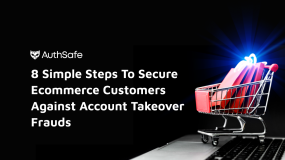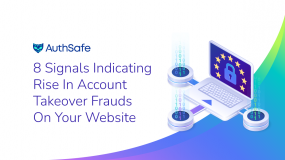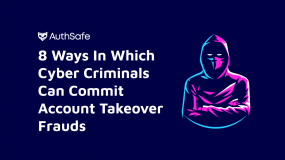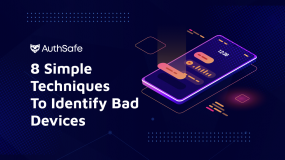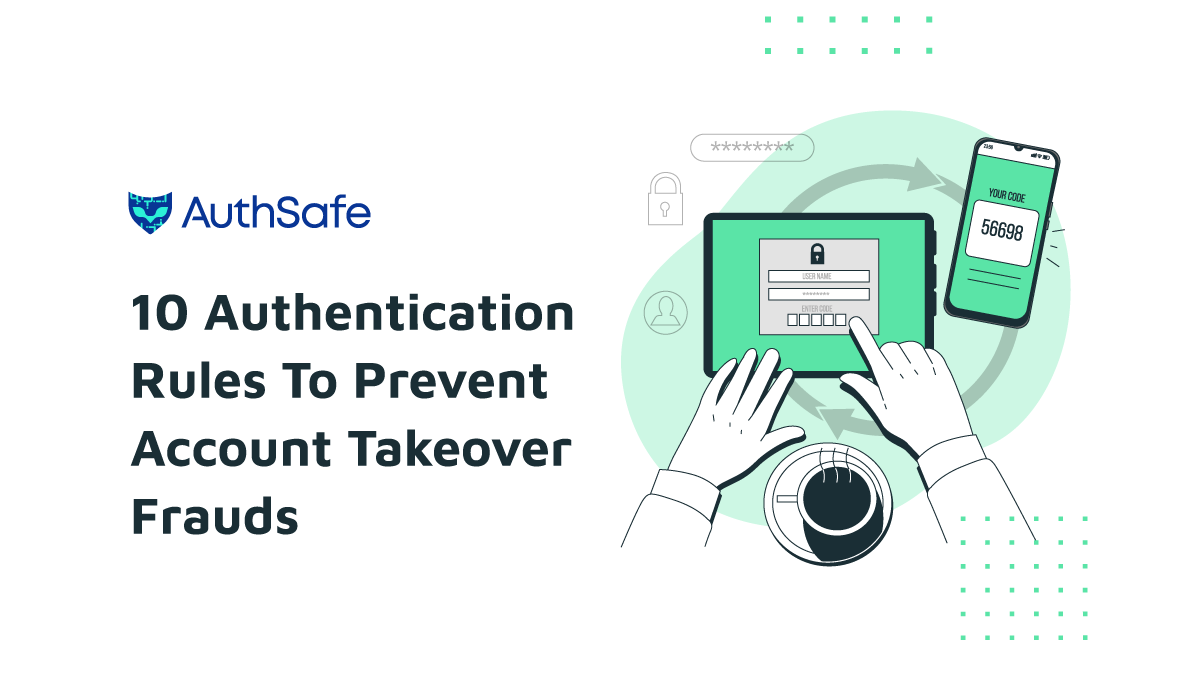
A business owner’s worst nightmare is account takeover fraud. Cyberattacks can hurt your business significantly.
Protecting business users’ accounts from hackers and hijackers is their utmost priority in today’s digital world. According to a report, cybercrime costs the world around 1% of the Global GDP. You will know how important it is when your account is under hijack, or someone hacks your business email or social media.
But don’t panic; account takeover frauds can often be prevented by considering some rules or measures. Here are 10 authentication rules to prevent account takeover fraud.
10 authentication rules to prevent account takeover fraud
We’ve compiled a list of 10 authentication rules to keep your information safe and secure. From two-factor authentication to biometric verification, these tips will keep the bad guys at bay and ensure that your accounts stay in the right hands.
1. Use a multi-factor authentication process
Multifactor authentication is a process that requires you to use two or more forms of identification to prove your identity. This is extremely effective at preventing account takeover fraud. In fact, the MFA technology can block over 99.9 percent of account compromise attacks.
The first step in multifactor authentication is to ask for only the user’s phone number or email address. This allows us to verify that they are who they say they are. The second step involves asking for something only the user knows: their password.
This second step ensures that even if someone has access to the user’s phone number or email address, they won’t be able to access their account unless they have their password.
2. Keep an eye on alerts
Alerts are a simple way to keep an eye on your account. If you see one pop up, check it out right away!
Let’s say you get an alert saying, “Someone else is trying to log in from a new device.” This means someone is trying to access your account from a device you don’t recognize. It could be a hacker trying to gain access or someone who has stolen your password and is using it for their purposes. Either way, you should take action immediately.
You should always keep an eye on alerts—and when you do, act quickly! If you don’t act quickly enough after receiving an alert, there’s a chance that the person who alerted you about the issue will no longer be there when you try to take action.
In this case, make sure to keep track of all details related to the alert so that later on (like if there’s another issue), they can help identify whether or not this person is legitimate.
3. Don’t use public WiFi for important transactions to stay away from account takeover fraud
If you’re a business, don’t use public WiFi for important transactions.
We all know that using a public WiFi network is a security risk, but did you know that it can cost your business money? That’s right: if you use a public WiFi connection to make a transaction or send sensitive information, there’s a chance that someone could intercept the data and use it to access your accounts.
That means your clients’ information might get stolen or used by an imposter – and when they realize it, the blame will fall on you.
4. Password managers can help
Password managers are a great way to keep your passwords safe and secure, and can also be used to prevent account takeover frauds. In fact, as per research, 1 in 4 people use a password manager.
When you have a password manager, you create a new set of rules that define which websites allow access to your personal information. When you try to log into a website that isn’t on your list of approved sites, the password manager will ask for confirmation before allowing the login. It won’t let you log in if you don’t confirm it’s an approved site.
If someone tries to take over one of your accounts, they’ll have to get through two levels of security: they’ll need both your password and access to your computer or phone where the password manager is installed.
This makes it much more difficult for them to do so without getting caught—especially if you’ve got multiple layers of authentication turned on (like Google’s 2-step verification).
5. Educate yourself about digital security
One of the best ways to protect your business from account takeover fraud is to educate yourself and your employees about digital security. You can’t afford to be ignorant of the risks or think it won’t happen to you.
In today’s world, all businesses are vulnerable to account takeover fraud, whether small or large. This is because hackers are always finding new ways to break into accounts and steal information. And if they manage to gain access to one customer’s account, they can use that customer’s information as a way of breaking into other accounts belonging to customers who have similar profiles.
Businesses need to educate themselves about digital security because this will help them recognize when something has gone wrong—and it will also give them the tools they need to fix it before too much damage has been done.
6. Ensure your security solution offers solutions for every step of the customer journey
The customer journey can be divided into four main steps: awareness, consideration, purchase, and post-purchase. In each step, customers are exposed to different types of risk.
For example, during the awareness stage, customers are looking for information about your product or service, so they may click on links to external sites to find more information. This exposes them to phishing attacks or malware downloads.
In the consideration phase, customers actively evaluate your product or service against your competitors. At this stage, they may visit multiple websites that hackers could compromise and leave them vulnerable to account takeover frauds.
During the purchase stage, customers are purchasing your product or service. This can expose them to scams like money mule schemes where they unwittingly become part of an illegal money transfer network.
And finally, during the post-purchase phase, customers have just made their first purchase and may be more likely to make additional purchases in the future. At this point, they may be targeted by phishing attacks or ransomware infections that try to steal their credit card information for future fraudulent transactions.
Ensure your security system is adequate to protect you in all phases of cyber fraud. At SecureLayer7 we exactly do what we preach – security against cybercrime in all phases.
7. Use updated software and antivirus programs
Using updated software and antivirus programs is the best way to prevent account takeover fraud.
You can’t rely on your employees for the best security, so ensure you’re using the latest software and antivirus programs. This is especially true for businesses using remote access to their servers.
You need to be sure that your employees are using the most up-to-date versions of these programs. Otherwise, they could be vulnerable to hacking attempts from other people who want to get into your systems.
Many businesses don’t update their software because it’s a hassle, but you should ensure you’re always up-to-date so that hackers can’t find any backdoors into your systems. Also, ensure you have an antivirus program installed on your computer—this will help detect any malware on your computer that could be used to steal personal information or take over accounts.
Businesses must ensure that their authentication system is updated based on the latest risk data. This means that if any new threats are emerging in the market – such as new phishing attacks – they need to ensure they’re protected against those threats.
8. Ensure that the websites where you enter passwords support SSL/TLS encryption
The safest way to prevent account takeover fraud is to ensure that the websites where you enter passwords support SSL/TLS encryption.
When you log in to your bank, credit card company, or other financial accounts, you’re protected by a strong layer of encryption. It prevents hackers from breaking in and stealing your information.
However, not all sites have this protection. In fact, some websites don’t offer any encryption at all! If you don’t see “HTTPS” at the beginning of the URL when you log in, then your account may not be safe. The connection may not have encryption.
If you’re unsure whether your account is safe from hackers, call your financial institution and ask them what kind of encryption they use for their online services.
If they don’t use SSL/TLS encryption on their website—or if they can’t tell what kind of encryption is being used—you should close down that account as soon as possible until they can provide more comprehensive security measures.
9. Secure initial credential capture
The most common way for hackers to take over a business’s account is by stealing the initial credential. The first line of defense against this type of attack is secure initial credential capture.
When capturing credentials, ensure they are secure and that a third party cannot intercept them. If there is any possibility that someone could intercept your transaction, then it’s not secure!
If you’re working with a third-party service provider, ensure that the service provider uses industry-standard encryption and hashing algorithms to encrypt data before sending it to your servers. And always check with your service provider to ensure they use strong encryption algorithms.
10. Strengthen email security practices
The most common attack against businesses is when hackers gain access to a business email account. They then send fraudulent emails to customers and vendors. As reported, 90% of security breaches come from phishing attacks. This can cause significant damage to your brand and reputation.
To prevent this, you should:
- Ensure that all staff has strong passwords.
- Use two-factor authentication for logins.
- Have a process for reviewing all outgoing emails for any suspicious activity or requests for new passwords.
Bonus Tip: Use mobile device management to remotely lock or wipe lost or stolen devices (if possible)
If you’re a business owner, you know it’s not just about protecting your data from hacks. It’s also about ensuring that your data isn’t compromised if a device gets lost or stolen.
One of the best ways to prevent account takeover fraud is with mobile device management (MDM). With MDM, you can remotely lock or wipe lost or stolen devices. If possible, even install security software to prevent future attacks.
Protect your Account with AuthSafe
In the age of increasing cyber threats, account takeover is among the most challenging. The reasons are obvious. Attackers must bypass password complexity rules and implement sophisticated capabilities to gain access, which is almost impossible for most enterprises. However, what could be done to prevent a successful account takeover?
Rather than preventing all attacks, enterprises should focus on adding authentication requirements. It also includes setting up a security system to make it unlikely to breach the security of your accounts.
If you are looking to tighten up your security measures against cybercrime, contact us today.


